Measuring Our Machines
Today, an old book on testing machines harbors a surprise. The University of Houston's College of Engineering presents this series about the machines that make our civilization run and about the people whose ingenuity created them.
We seldom think about how we keep tabs on our machines. Are they strong enough, safe enough, efficient enough? How do we measure, then correct, them. Now I leaf through a late edition of an 1892 book on Experimental Testing. By then, we'd spent a century adopting powerful heavy machinery -- steam engines, then internal combustion. Electricity was just coming into widespread use.
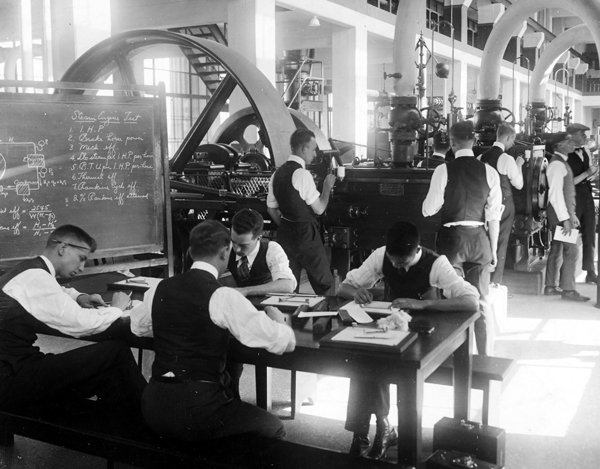
Students for whom (among others) this book was intended. This is an MIT laboratory in the early 20th century. The students are measuring the "indicated horsepower" of steam engines using engine indicators and polar planimeters. (More on this below and in the end notes.) Click on this image for a large view.
Now all our machine-testing bears an electronic imprint. Just look at automobile dashboards, thermostats, stovetops. My gas and water are metered just as they were a century ago. Only the other day, their readouts were changed from the old spinning dials to the digital displays that now rule our world.
But that old, newly-built world had to be monitored without electronics; and this vast old manual tells us how we tested machines in another time. Eleven hundred pages describe wildly creative mechanical gadgets -- pistons, springs, lever arms, mercury in tubes, styluses writing on paper drums.
How many people under fifty know what an engine indicator or a polar planimeter is? My spell-checker doesn't even know the word planimeter exists. Here are devices to give the hardness of steel, strength of an alloy, heating value of coal gas, speed of water through pipes, engine horsepower -- even the viscosity of molasses.
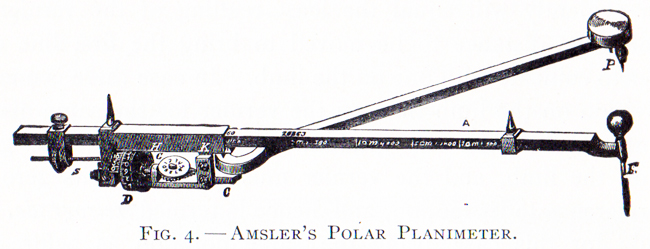
Of course the world changes, but when I studied engineering a half century after this book, I still used all those devices. I even designed ones like them. They were so well-built and well-conceived that they've only recently become obsolete.
Or have they? Look more closely at our new electronic world, if we can. You see, our measuring devices are now black boxes with hidden insides. Take one call the Prony Brake. We once used it to measure horsepower. An obvious clamp around an engine shaft dissipated power and exerted a force on a lever. Measure the torque, multiply it by the speed and you got the horsepower. That simple!

We still use the term brake horsepower, but now we measure it with a dynamometer that's far less evident to the eye. We still consume the engine's power, but now it drives a pivoted electric generator that pushes a lever against a scale. It's our old Prony brake, now packaged and fitted with electronic readout.
So it is with most of these old measuring machines. The innards are little changed, but now they're boxed into tidy packages with digital readouts. Take the one machine that preceded all others: our human body. When I was a child, a doctor read our blood pressure with a mercury manometer and a squeeze bulb. Now we look at an LED screen -- but we still wear the same measuring cuff.
So back to this old book: It is primitive, but primitive in the sense of being primary. What we're really seeing are clear pictures of the measuring methods that still underlie most of our electronics, even today.
I'm John Lienhard at the University of Houston, where we're interested in the way inventive minds work.
R. C. Carpenter and H. Diederichs, Experimental Engineering and Manual for Testing for Engineers and for Students in Engineering Laboratories. 7th ed. (New York, John Wiley & Sons, Inc., 1892/1906)
I am grateful to engineering colleague Stan Kleis for his insights. All diagrams are from the Carpenter/Diederichs book. The photo is courtesy of the MIT Archives.
About the polar planimeters and engine indicators mentioned in the text: See the Wikipedia website. An indicator provides a mechanical plot of pressure vs. volume within an engine cylinder. A polar planimeter measures the area of that graph, which is used in calculating the horsepower. Brake horsepower is lower than indicated horsepower since it doesn't account for "downstream" mechanical losses in the engine. (See the Wikipedia articles on Brake Horsepower and de Prony Brake.) See students of the period actually using these items in the photo above. See one of the more popular engine indicators and the diagram it might've produced below.
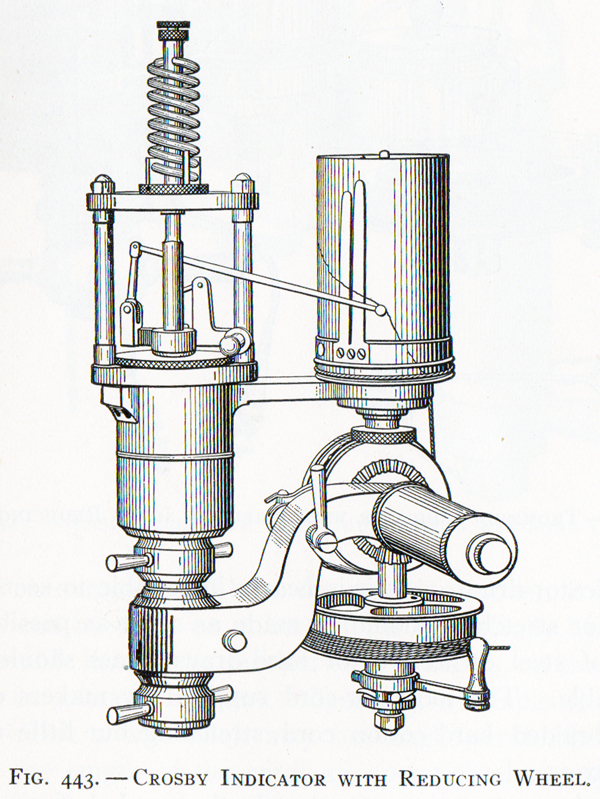
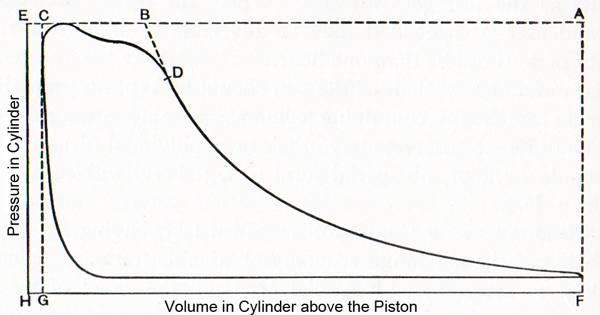
Below, another of the many disparate testing machines in this old book -- this one for testing the strength of cement:
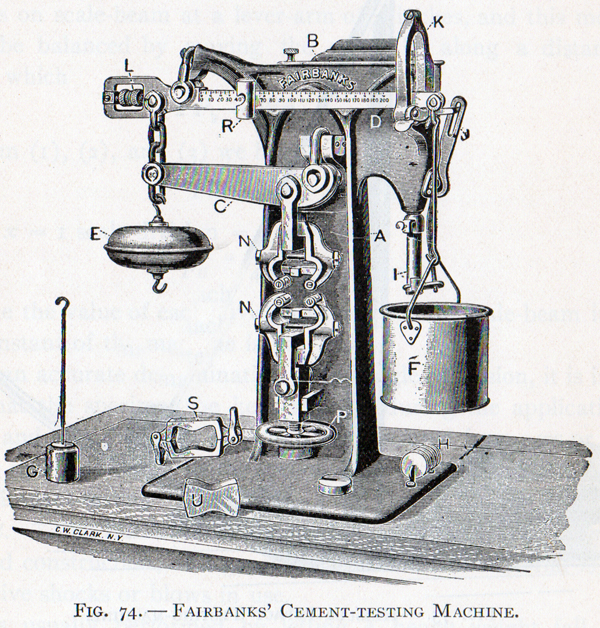
This episode was first aired on April 23, 2012